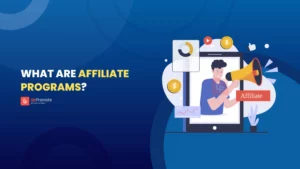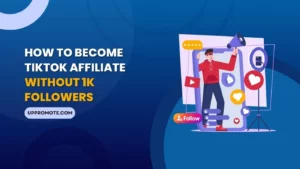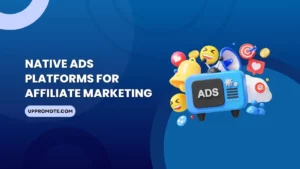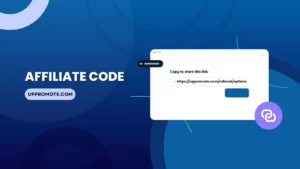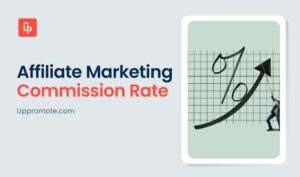Affiliate marketing has two main players: affiliates and the brands they team up with. This partnership has existed since the early Internet days and has become very popular. Recent studies predict the global affiliate marketing industry will reach $27.78 billion by 2027. This growth is impressive, especially compared to other sales channels.
To do well in affiliate marketing, brands should work with various affiliate partners. Relying too much on just one partner can be risky, so it’s wise to diversify. Many marketers already work with multiple affiliate networks and partner types to spread the risk.
This article will cover types of affiliate publishers. It will also show how brands can maximize their affiliate programs by working with them.
Who are Affiliate Marketing Publishers?
Affiliate marketing publishers are people or groups who promote products or services to earn a commission on sales or leads. They could be website owners, bloggers, social media influencers, or email marketers. Each one has its own audience and way of promoting things.
Some common types of publishers are:
- Niche-specific blogs: target specific interests or industries, serving a focused audience
- Social media personalities: endorse products or services with large followings
- Established email marketing lists: send out promotional offers and recommendations to subscribers
- Review websites and comparison platforms: provide detailed insights into various products or services.
Each type of affiliate publisher has its strengths and advantages. They allow brands to reach diverse audiences and maximize their affiliate marketing efforts.
Pro tip: Some of these affiliates cater to certain demographics, while others can reach a larger range of customers that you won’t be able to do with other marketing methods.
You can limit your affiliate selections to fit your business best if you know who your target audience is. It’s critical to have various options for expanding your reach and attracting new customers.
Once you’ve established your list, try out each affiliate to see which ones will help your business the most.
What Publishers Do?
Publishers are vital in affiliate marketing. They try to get people interested in affiliate products and services by including special links.
Content Creation and Promotion
Publishers put a lot of energy into making types of content that their audience will love. They write blog posts, share on social media, create videos, podcasts, and send out emails. They want their audience to learn something new, have fun, or stay updated on things they care about.
In their content, publishers include links or suggest products they think their audience will like. They do this because they genuinely believe these products can help their audience. They want to keep their audience’s trust, so they only recommend things they truly believe in, staying true to their own style and personality.
A great example of an affiliate blog post is The Every Girl, which covers various topics relatable to women, from fashion trends to relationship advice.
In their article “7 Holiday Outfits That Cost Under $100—Total,” they cleverly add affiliate links. So, when a reader clicks on a link and buys that cozy winter sweater, The Every Girl gets a little something as a thank-you for the recommendation.

It’s a win-win situation: readers get valuable content, and The Every Girl earns a little extra for their hard work.
Driving Traffic and Conversions
Once have their materials ready, the affiliates start to gain traffic from that.
Publishers use different marketing channels to attract their audience, such as SEO, social media, and email marketing. These strategies aim to drive traffic to their affiliate platforms.
Once visitors arrive, publishers strategically place affiliate links in their content. These links encourage clicks and help convert traffic into sales or leads for partnered merchants.
Anna Everywhere does affiliate marketing on Instagram differently from others. She’s a travel influencer who subtly promotes products, often featuring her son wearing the items.
Unlike many, she doesn’t push sales in her captions but seamlessly integrates products into her posts. Her approach shows how authenticity and creativity can make affiliate marketing effective on Instagram.
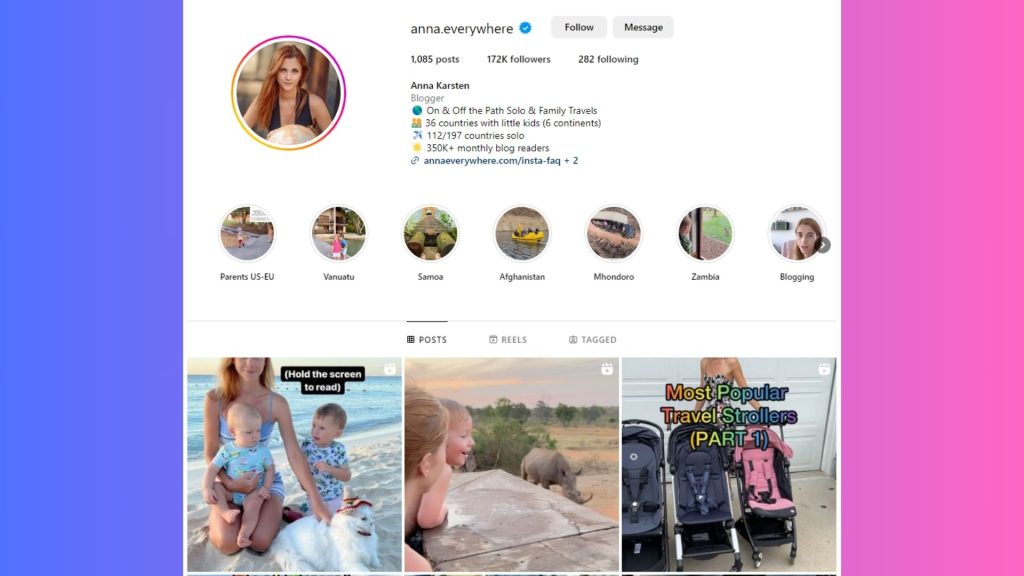
7 Types of Affiliate Marketing Publishers
Affiliate marketing helps businesses boost sales by partnering with publishers. Finding the right type of publishers is crucial for success.
Let’s explore seven common types of affiliate publishers:
Bloggers
Bloggers are one of the most popular affiliate publishers. They create valuable content for their readers. They write articles and posts recommending products or services in their niche. With a loyal audience, bloggers excel at driving traffic and sales.
Bloggers are just one type of content creators, but there are plenty of blogs out there covering various topics. They share personal interests, review consumer products, and offer tips on common topics like saving money and parenting.
You can find bloggers through Google searches.
Simply input your niche followed by “bloggers” into the search bar, and you’ll find numerous top blogs and blogger roundup entries related to your field. You can also try these variations:
- “Best sites” + your niche
- “Top blogs” + your niche
- “Major bloggers” + your niche
- “Top influencers” + your niche
By adding a simple search query like this “organic beauty bloggers”
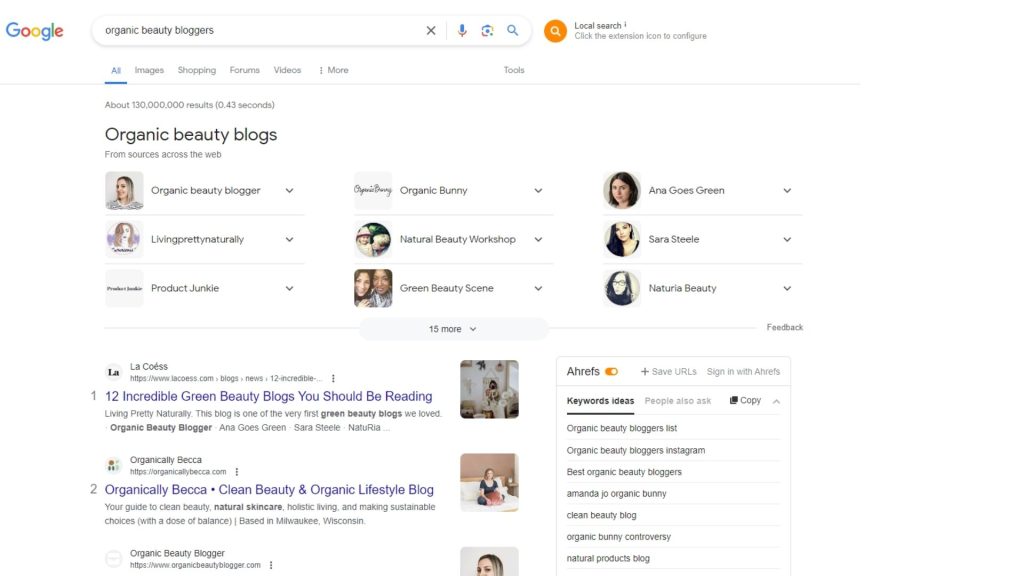
The results will show a list of bloggers and top pages that cover a list of them.
Google is more powerful than that. Why?
You can modify Google’s Filter and Advanced Search Settings for precisive and relevant searches.
Pro Tip: When searching for bloggers to collaborate with, start by checking if they’re open to being contacted. Look for contact information on their website or reach out through social media.
Remember to analyze their online presence to ensure they have an engaged audience and consistently post new content. By using tools like SEMRush or Ahrefs to see their website’s insights.
Social Media Influencers
These individuals have social media accounts with a specific number of followers and intend to promote products on these platforms. They include TikTok influencers, Instagram influencers, YouTubers, or a combination of these.
To find them, you can use influencer recruitment solutions such as Impact or Grin.
Alternatively, you can search for them using relevant hashtags related to your industry on Instagram, Facebook, or Twitter.
For example, you can find these public figures on Instagram through Suggested “Profiles” or “Location”
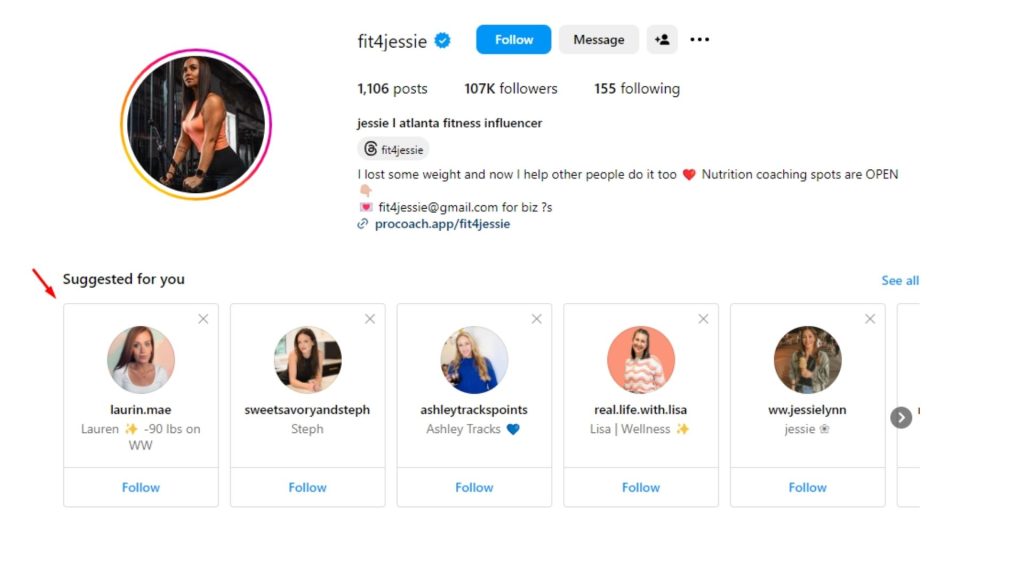
Email Marketing Specialists
Email marketing publishers create emails resembling brand communications to prompt action. They hold extensive email lists covering diverse audiences. This versatility makes them valuable for product launches or services. Utilizing these lists enhances brand visibility and drives affiliate conversions.
Some email affiliates promote their lists through newsletters and subscription materials. They may also use “story selling” autoresponder series or include topical thought leaders in their mailing lists.
Make sure affiliates include only relevant content in their emails. You should discuss the content they plan to include and provide promotional materials like:
- Banners
- Video descriptions
- Product images
Coupon and Deals Websites
Coupon and deals websites or cashback sites are affiliates that offer discounts and coupon codes to shoppers. These affiliates attract visitors by showcasing the latest discounts and coupons available for a wide range of products and services.
Getting in touch with these cashback publishers can be challenging, but it’s worth it because they often have stable traffic. When contacting them, personalize your email to the specific website you’re contacting rather than using a generic template.
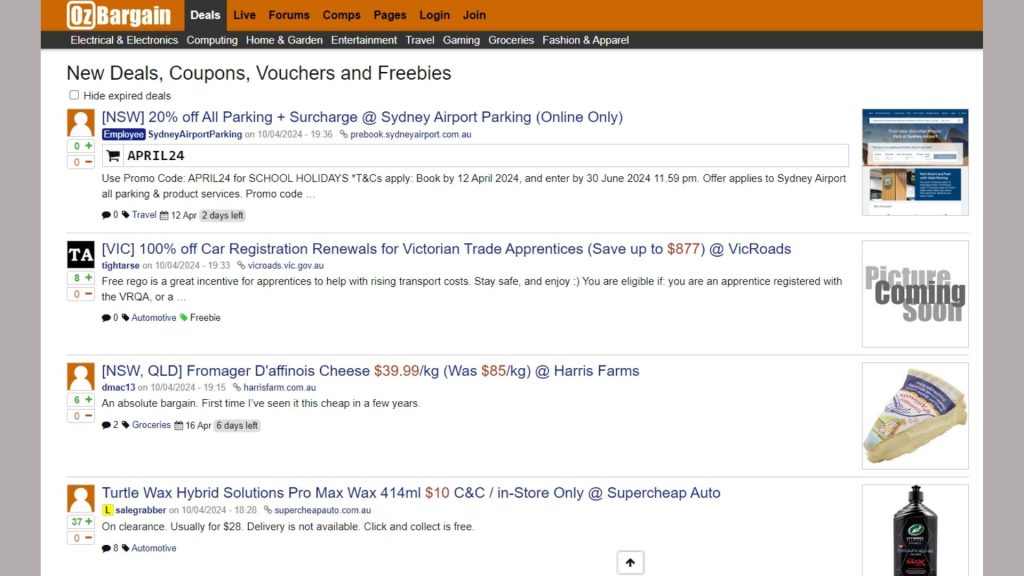
Coupon and deals websites are suitable for a wide range of industries, including:
Retail: Clothing, electronics, home goods, etc.
Travel: Airlines, hotels, car rentals, etc.
Food and dining: Restaurants, food delivery services, meal kits, etc.
Health and wellness: Supplements, fitness equipment, health foods, etc.
Entertainment: Streaming services, event tickets, amusement parks, etc.
Essentially, any industry that offers products or services where discounts and promotions can attract customers is suitable for coupon and deals affiliates.
Comparison Shopping Websites
Comparison shopping websites act like your savvy shopping buddies. They gather information from different stores and present it all in one spot. It’s like having a friend who knows all the best deals and tells you where to find them.
Partnering with these sites can give brands a big boost. They get more visibility because their products show up alongside others, helping shoppers notice them. Plus, when people are comparing options, brands have a great chance to catch their eye and make a sale.
It’s like being recommended by a trusted friend – shoppers feel more confident buying from brands they find on comparison sites.
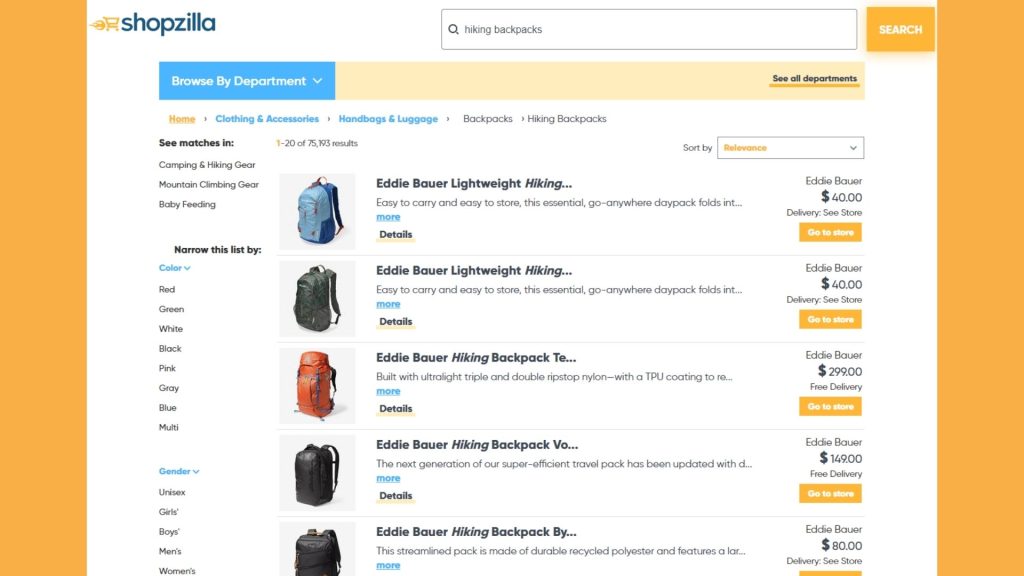
For more than 20 years, Shopzilla has been a popular spot for bargain seekers. With millions of products available, competition is tough, but the potential for sales is huge.
If you’re a seller considering Shopzilla to boost your sales, it’s worth noting it’s part of the Connexity family. This connection gives you access to a broad advertising network, allowing you to reach new customers and explore different marketing avenues.
Agency Partners
If you’re running a B2B affiliate program, teaming up with agencies experienced in B2B sales can be advantageous. These agencies know the ins and outs of the B2B sales world and can help you attract valuable business customers.
Think about reaching out to your happiest clients for potential agency partnerships. You can also use friendly email campaigns or encourage your sales team to chat about the affiliate program during their client interactions.
By partnering with this type of digital publishers, you’re not just expanding your reach but building relationships that can lead to lasting business growth.
Loyalty and Cashback Apps
Loyalty and cashback apps are digital reward programs for shoppers.
Loyalty apps offer rewards, discounts, and special deals to frequent buyers, while cashback apps refund money after you shop.
With loyalty apps, you earn points for buying stuff; with cashback apps, you get a percentage of your purchase back as cash.
Popular examples include FlyBuys and Rakuten. These apps keep customers engaged, make them come back for more, and build loyalty to brands by giving them something extra for their purchases.
Benefits of Being an Affiliate Marketing Publisher
Affiliate marketing has its upsides. A survey by Influencer Marketing Hub showed that while many affiliates make less than $10,000 a year, about 16.87% rake in $50,000 or more annually. It’s proof that with dedication and strategy, this field can be quite lucrative.
Affiliate marketing publishers enjoy plenty of pros, making it an attractive option for those seeking flexibility and entrepreneurship.
Monetization Potential
Working as an affiliate marketer can be highly lucrative, with Glassdoor reporting an average annual passive income of $66,029, ranging from $35,000 to $124,000.
Whether a side hustle or a full-time job, affiliate marketing can earn substantial income while promoting products and services you believe in.
Work from Anywhere
Affiliate marketing offers incredible flexibility, allowing you to work full-time, part-time, or as a freelancer based on your preferences. All you need is a computer and internet access to get started from your home.
Depending on your chosen niche, the time and effort required can vary, but you have control over your schedule.
You can even choose to promote various products from different companies as an independent affiliate, earning commissions by recommending products to your audience without the hassle of holding inventory. It’s a flexible and lucrative opportunity to make money online.
Build Relationships with Brands
As an affiliate, you can form important partnerships that may help you down the line. Affiliate marketing involves networking and making connections, which can lead to new opportunities.
For instance, you might land a job as a content marketer at a company you’ve partnered with. You could meet significant clients through your affiliate work, paving the way for a successful career.
Grow Your Audience and Influence
When you share products or services with your followers, you not only make money but also gain more followers and become more influential in your niche.
As your followers grow, you can earn and partner with brands and other influencers.
It’s like a team effort where you get noticed more while helping your followers find great stuff.
However, despite its many benefits, it’s essential to consider whether affiliate marketing aligns with your goals and expectations before diving in.
While it can be highly rewarding, success often requires dedication, strategy, and persistence.
Challenges of Being an Affiliate Marketing Publisher
Becoming an affiliate marketer is exciting, but it comes with its challenges, too.
Building a Loyal Audience Takes Time and Effort
One biggie is building a loyal audience. Creating content, engaging with people, and earning their trust takes time and effort.
Getting started with affiliate marketing isn’t a walk in the park. It’s more like climbing a mountain – lots of sweat and struggle. Sure, some folks hit it big right away, but that’s rare. For most of us, making a mark takes serious hustle and commitment.
In this field, standing out is key. You’ve got to be different and offer something unique. And when you’re promoting different products, you need to change your game plan to match each one.
It’s not easy, but nothing worth having ever is, right? If you’re willing to put in the work, affiliate marketing can pay off big time in the end.
Competition is High
Then there’s the competition. Everyone’s trying to stand out in a crowded room, so you gotta find your own unique voice, share stuff that matters, and get creative with your marketing.
As an affiliate, you’re not the boss of the affiliate marketing programs – the product owners are. So, you gotta play by their rules. It’s their world; we’re just living in it!
Affiliate marketing might be competitive, but it also offers some sweet perks and low risks. That’s why so many people are willingly jumping on the bandwagon!
Reliance on Merchant Programs and Commission Structures
And let’s not forget about the money. Your paycheck depends on how well affiliate programs perform and the affiliate commissions they offer.
Affiliates get paid only when a purchase is made. They track purchases using temporary browser cookies.
Finding Success as an Affiliate Marketing Publisher
Finding success as an affiliate marketing publisher is within reach if you follow some key strategies.
Focus on a Specific Niche
Your niche is the topic you want to focus on and promote.
To stand out in today’s crowded online world, it’s best to narrow down your niche. Instead of covering a broad topic like sports, consider something more specific, like running gears. This helps you attract a more targeted audience and may improve your search engine rankings.
Here are four questions to help you find the right niche:
- What am I good at?
- What do I enjoy doing?
- What am I curious about?
- What do others say I excel at?
Choosing something you’re passionate about is crucial. You’ll need to create a lot of content to succeed in affiliate marketing. If you pick a topic you dislike, it’ll be tough to stay motivated when faced with challenges.
Create High-Quality Content
In 2023, people globally spent an average of six hours and 40 minutes online daily. However, simply creating content and adding affiliate links won’t cut it. To stand out, make your content valuable to your audience.
Blogging is a powerful tool, with 65% of affiliate marketers driving traffic through blogs alone. Kelly Marohl, founder of The Greenspring Home, advises focusing on high-quality content and building an engaged audience.
While a website isn’t necessary for affiliate marketing, social media platforms offer free and easy promotion opportunities. Many affiliates, like @sabsaysalot on TikTok, operate solely on social media, earning income through affiliate links in their content.
https://www.tiktok.com/@sabsaysalot/video/7355576035473100037
Pinterest offers opportunities to make money through affiliate marketing through various boards.
Understanding SEO is crucial for blogs and YouTube channels. BrightEdge reported that SEO drives 83% of search engine traffic, highlighting its importance in reaching your target audience. Additionally, email marketing helps maintain customer interest and engagement.
Protip: To make your affiliate site stand out, create top-notch content that naturally integrates your affiliate links. Avoid simply listing products; instead, address your audience’s needs.
Promote Transparency and Build Trust
To build trust as an affiliate, it’s essential to be open and honest with your audience. Here are some simple strategies:
Tell Them About Affiliation: Make it clear that you earn an affiliate commission from the products you promote. Being upfront builds trust.
The FTC works to safeguard consumers from misleading marketing tactics. Some affiliate marketers may promote scams or misleading products for profit. To prevent this, the FTC mandates that affiliate marketers disclose their financial ties to promoted brands or products.
This means being transparent about compensation and clearly labeling affiliate links to comply with FTC regulations.
Give Genuine Reviews: Be honest about the products you promote, mentioning both the good and the bad. Your audience will appreciate your honesty.
Share Your Stories: Connect with your audience by sharing personal experiences with the products. It makes you more relatable and trustworthy.
Protect Their Privacy: Assure your audience that their data is safe with you by using secure platforms and clearly outlining your privacy policy.
Track and Analyze Your Performance
Tracking and analyzing your performance as an affiliate marketer is essential for understanding what’s working and what’s not.
You can use various use tracking tools to analyze your workings such as:
- Google Analytics
- MonsterInsights
- Pretty Links
Also, you should see where your traffic is coming from, whether it’s organic search, social media channels, email marketing, or other channels.
Monitor Traffic Sources: Identify where your traffic is coming from, whether it’s organic search, social media, email marketing, or other channels.
It’s also crucial to dive deep into conversion data. By closely monitoring which affiliate links are driving the most conversions, you can gain valuable insights into the preferences and behaviors of your audience.
Additionally, conducting A/B tests allows you to experiment with different strategies and determine which ones resonate best with your audience.
And don’t forget to check in regularly to see how things are going and tweak your strategy if needed. It’s all about learning and growing along the way.
Stay Up-to-Date with Industry Trends
Competition in affiliate marketing is intense, so it’s crucial to stay updated on the latest trends to stay competitive.
Plus, by staying informed, you can take advantage of new marketing methods as they emerge. Keeping up with these strategies will help maximize your conversion rates and revenue potential.
Frequently Asked Questions
- How do I become an affiliate publisher?
Becoming an affiliate publisher is simple. You can start by joining an affiliate program, where you’ll receive a unique referral link. Promote products or services using this link through your blog, website, or social media. Earn commission rates for each sale made through your referral link.
- What is the largest affiliate publisher?
Awin is the biggest affiliate publisher, boasting over 15,000 advertisers and 210,000 active potential publishers. It’s a respected affiliate program offering access to various marketing programs, tools, and training for publishers. Affiliate marketing is a substantial sector, with global spending expected to hit $15.7 billion by 2024. Awin’s popular affiliate network positions it as a key player in this industry.
- How is an affiliate publisher typically paid?
An affiliate publisher is usually paid through commissions. They earn a percentage of the sales or leads generated through their affiliate links or promotional efforts. The average commission rate varies depending on the affiliate program and the type of products or services being promoted.
- Who is No 1 affiliate marketer?
Identifying the “number one” affiliate marketer can be subjective, as success can be measured in various ways, such as revenue generated, influence, or industry recognition. However, some well-known affiliate marketers include Pat Flynn, John Chow, and Neil Patel. Each has achieved significant success in affiliate marketing through their websites, blogs, and online courses.
Wrapping Up
When it comes to choosing the right affiliate publisher, brands need to start by setting clear goals for their program and figuring out what success looks like. They should also pinpoint which types of sales bring the most value to their program.
With UpPromote’s expertise and powerful platform, regarded as the top-recommended affiliate & referral marketing solution on Shopify, brands can make informed decisions about which affiliate publishers will help them achieve their goals.
For personalized guidance on maximizing affiliate marketing ROI, brands can install UpPromote today.



